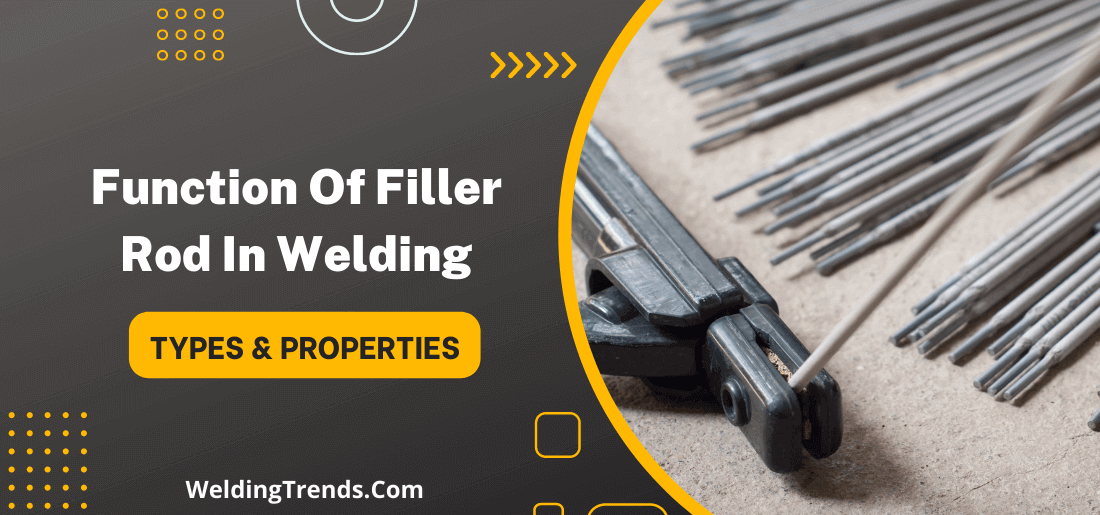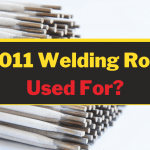In welding, filler rods are an essential component. Welding is a process that joins two or more pieces of metal together. It is done by heating the metal to a temperature that is hot enough to melt the metal and then using a filler rod to join the two pieces together.
The filler rod is a piece of metal that is melted and used to fill in the gap between the two pieces of metal that are being welded together.
There are different types of filler rods, and each one has its specific function. In this blog post, we will discuss the different functions of filler rods in welding. Stay tuned!
function of filler rod in welding
1) Create Strong Bond with Filler Rod
Filler rods play an important role in welding because they help to create a strong bond between the two pieces of metal. In addition, filler rods can also help to prevent welds from cracking or breaking.
2) Filler Rod for Aluminum welding
Different types of filler rods are available on the market and each comes with its specific functions. For example, there are filler rods that are designed for use with aluminum welding. These filler rods have a low melting point and are specifically designed to weld aluminum without causing it to crack or break.
3) Filler Rod for stainless steel welding
In addition, there are also filler rods that are designed for use with stainless steel welding. These filler rods have a higher melting point and are specifically designed to weld stainless steel without causing it to crack or break.
When choosing a filler rod for your welding project, it is important to choose one that is specifically designed for the type of metal that you will be welding. This will help to ensure that your weld is strong and will not crack or break.
Types of filler rods and their properties

In this section, we will discuss the different types of filler rods and their properties.
1- E7018 Welding Filler Rod
The E7018 welding filler rod is a low-carbon steel rod that is used for welding low-carbon steel. This type of filler rod is easy to use and provides excellent welds.
In addition, the E7018 welding filler rod is also resistant to cracking and breaking
2- E7028 Welding Filler Rod
The E7028 welding filler rod is a nickel-based alloy rod that is used for welding stainless steel and high alloy steels. This type of filler rod provides excellent welds and is ideal for use in applications where high strength and corrosion resistance are required.
3- E71T-1 Welding Filler Rod
The E71T-1 welding filler rod is a flux-cored rod that is used for welding all position, single, and multiple pass applications. This type of filler rod is easy to use and provides excellent welds. In addition, the E71T-1 welding filler rod is also resistant to cracking and breaking.
4- E7024 Welding Filler Rod
The E7024 welding filler rod is a high strength, low alloy steel rod that is used for welding high strength steel. This type of filler rod provides excellent welds and is ideal for use in applications where high strength is required.
How to select the right filler rod for the job?
When choosing a filler rod for your welding project, it is important to consider the following factors:
- Type of metal that you will be welding
- Thickness of the metal
- Position of the weld
- Strength of the weld required
By considering these factors, you can ensure that you choose the right filler rod for the job.
Now that you know the different types of filler rods and their properties, you can select the right one for your welding project. In addition, you should also consider the factors that will affect your choice of filler rod. By doing so, you can ensure that you choose the best possible filler rod for the job.
Tips for using filler rods effectively in welding
To use filler rods effectively in welding, it is important to follow the tips discussed below.
1) Choose the right filler rod
The first tip is to make sure that you choose the right type of filler rod for the job. Therefore, it is important to choose the right filler rod for the job.
2) Maintain speed
The second tip is to maintain a steady hand and a consistent speed when welding with a filler rod. This will help to ensure that the weld is strong and will not crack or break.
3) Wear Gloves
The third tip is to be aware of the fact that filler rods can be very hot. As such, it is important to wear gloves when handling them. In addition, you should also be careful not to touch the hot end of the filler rod on your skin.
4) Be aware of the fumes
The fourth tip is to be aware of the fact that welding can produce harmful fumes. Therefore, it is important to work in a well-ventilated area. In addition, you should also wear a respirator to protect your lungs from harmful fumes.
Finally, it is important to keep in mind that filler rods are made of metal. As such, they can conduct electricity. Therefore, it is important to take precautions when welding near live electrical circuits.
By following these tips, you can use filler rods effectively and safely in welding.
FAQs – Functions Of Welding Filler Rod
What is the function of filler and flux material?
The function of filler and flux material is to protect the weld from corrosion, provide support to the molten metal, and remove impurities from the weld. The filler material also adds strength to the weld.
What is the function of flux in welding?
The function of flux in welding is to protect the weld from corrosion and to remove impurities from the weld. The flux also helps to support the molten metal and to add strength to the weld.
What is the difference between an electrode and a filler rod?
An electrode is a rod that is used to conduct electricity during the welding process. A filler rod is a rod that is used to add metal to the weld. The electrode is used to create the arc that melts the metal. The filler rod is used to add metal to the weld pool.
What type of material is used in welding filler?
The type of material used in welding filler depends on the type of welding being performed. For example, gas metal arc welding (GMAW) uses a wire that is made of an alloy of steel, copper, and other metals. This wire is fed through a welding gun and melts as it hits the base metal. The molten metal from the filler wire adds strength and support to the weld.
Can you weld without filler?
No, you cannot weld without filler. The filler material is used to add strength and support to the weld. Without filler, the weld would be weak and could easily break.
Wrap Up
The filler rod is a metal electrode that is used to fill the weld joint. It is melted and deposited into the weld puddle to create a strong and sound weld. The filler rod also helps protect the molten weld pool from atmospheric contamination.
There are many different types of filler rods available, each with its unique properties. It is important to choose the right filler rod for the job so that you can produce a quality weld.
The most common type of filler rod is made from mild steel. However, there are also aluminum, brass, bronze, copper, and stainless steel filler rods available.
Filler rods come in a variety of diameters and lengths so it is important to select the one that will fit the application properly. When choosing a filler rod, it is also important to consider the welding process being used and the base material being welded.




